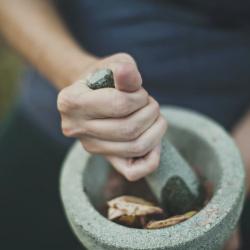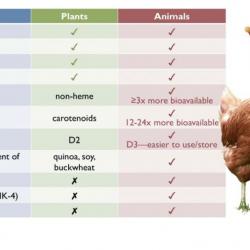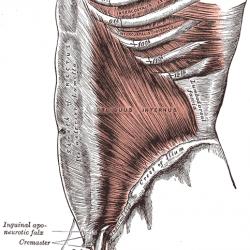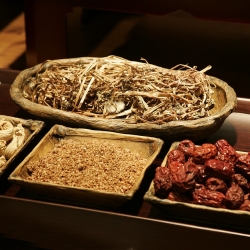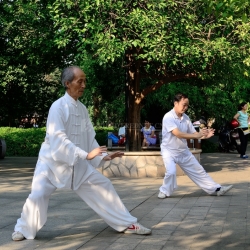All is Not Lost: How to Find Positivity and Hope While Battling Chronic Illness or Other Health Issues
When you find out that your loved one is diagnosed with a chronic illness, it feels like the world disintegrates around you. The floor disappears under your feet, the walls float off into space, the air even seems to rush out of your lungs. I understand the feeling. I experienced the same feelings when we found out that my husband, Scott, had a “something” on his liver.
Being a thorough person, my husband wanted to explore every avenue that might heal him. We went to all the appointments that would be expected in our western healthcare system, such as MRIs, CT scans, and biopsies. But Scott also had us investigate methods of healing that were from the natural or eastern-oriented sector, such as Reiki, bio-feedback and Cesium High pH Therapy.
The western world only offered three things for cancer treatment: chemo, radiation and surgery. And the hope they gave seemed more like dogged determination than real hope. Besides, I could read between the lines: there really wasn’t hope for him with just these methods. Practitioners in the eastern or holistic sector, however, were forward-thinking, positive, and busy putting one foot in front of the other. And they had many treatment choices, not just three.
So, during this time where we found—in holistic healing—a promise of life lived outside of a hospital bed, there were three factors that gave us optimism and aspiration: connecting with people, integrative health, and a higher power.
Build Your Connections
Some of your connections will hopefully be family and friends that you can depend on during this unbelievably difficult time. Our neighbors and family were an enormous support! Just like it “takes a village” to raise a child, it took a village to sustain me and Scott during this horrendously trying time. Their care lightened us and gave us the feeling that things would be OK.
A word of caution: while it is important to have people in your corner, it’s just as important to be mindful of who your supporters are. Some people support by being so overly concerned that they end up exuding fear and negativism. Their lower vibrations really do affect your energy. So limit your time with these people, for your own self-care and that of your sick loved one.
At the time we found out that Scott had a problem, I was involved with an alternative care company. I was connected with people—nationwide—who each had their own network of integrative practitioners. These people became the network I relied on for additional treatments. I was so new in the holistic world that I didn’t even know the titles to ask for. I just trusted that these people knew more than I did, and that allowed me to follow lead after lead.
If you don’t have any kind of alternative care network yet, a good place to start is at your local health food store. Ask them about their resources. Just like there are groups of people who love sailboats, or who collect gems or antique guns, there are groups of people who know about muscle testing, releasing trapped emotions or looking at the person as a whole: body-mind-spirit, instead of isolating or looking only at the physical body structure.
Know Your Options
One of the beauties of working with the holistic or integrative sector of healthcare is their positive outlook. I couldn’t help but notice the difference between the two floors of our local hospital: the floor that offered surgeries was quite energetic and happy, because people get better from surgeries. The floor that housed cancer patients was somber and sad because people die from cancer.
I have heard from so many people in just the last month who were told something like, “He’s only got three months.” This squashes hope. Often patients and family stop right there. They don’t look elsewhere; why should they bother? The doctor—the knowledgeable one, the one who makes decisions—already said, “There is no hope.” (And according to the treatments available in the western method, they are absolutely right).
But for those willing to look outside standard western methods, there is still hope, maybe because they have many more options from which to choose. The Immune Therapy Center in Tijuana currently has 25 methods. I much prefer the energetic gleam in their eye from a hopeful approach than the deadened, glazed glance that skirts over a person who is already considered dead via western choices.
Another reason for the hopeful attitude of integrative practitioners is that they recognize that our physical health is tied to our emotions. And if our feelings and emotions can change, the health surrounding the areas that house our emotions can change too. That’s what they do in looking at the whole mind-body-spirit. They take the whole person into consideration, and when that occurs, miracles can happen.
Believe in a Higher Power
Which leads to point number three: connecting with a higher power.
From the beginning, Scott and I tried following the inspiration we felt came from a higher being - which for us, was God. Every day we did what we felt God’s spirit led us to do: call this facility, talk to that person, or find this link online. In fact, I was led to find one of our main energy workers because I was at the natural health food store, and I saw a sign about a class she was giving. I attended that class, which led to her coming to help us, which led to our going to The Optimum Health Institute in California, and that led to our going to a natural cancer clinic in Mexico. All from a sign at the health food store I noticed when buying organic veggies.
Feeling open to God’s spirit and inspiration is part of feeling supported by God. The other part is just believing in God himself. Stephen E. Robinson has a book called “Believing Christ” and he points out, “[People] believe in Christ, but they do not believe Christ.” (pg 9, Believing Christ, Deseret Book, SLC 1992). One way of putting that is that we are happy to think of the “good news” of the gospel, but we don’t think it applies to us personally.
For me, believing in God—that through Jesus my husband and I will both be resurrected, that God knows me, that God loves me and God always wants what’s best for me—that gets me through the hard times. Among many beautiful truths in the world, the bottom line is that Jesus died for me so I can live again. Jesus is the only one who did that, and that changes my life. That gives me perspective and hope for the future. Feeling supported by God and knowing there is more to His plan than I fathomed helped me to understand Scott’s choice and find peace with it.
Finding the Silver Lining
My daughter-in-law and I have both had a thyroidectomy. It’s a surgery that can destroy the vocal cords (thus the ability to speak), create ugly visible red marks on the neck, and even cause death. Both of us though, in our own ways, approached the surgery by looking to the future. “When I get better I will…” and “In the future I will…” Hope in the future is the silver lining. And amazingly, when your mind is on that trajectory, your health often follows the same path.
This kind of thinking goes even beyond a silver lining. It’s about finding positivity and hope, even when battling something devastating like a chronic illness. It’s training your brain to expect the best outcome, and never settling for less than. And the best way to keep this positivity and hope is to look outside of what you know, hold those you can depend on close, and trust that God has a plan that exceeds our expectations.
For more advice on how to remain hopeful despite adversity, you can find Scott’s Choice: Letting Go, Letting God on Amazon.
Elaine Brewster is a personal health and wellness advocate in the truest form: after walking by her husband's side during cancer, she saw that physical aspects were just one small part of our whole well-being as humans. Her best selling book shares raw, real, and relatable conversations about chronic illness, self-care for caretakers, grieving, spiritual and emotional well-being, and the need for a more proactive + holistic approach to health.
More to Read:
Previous Posts:
